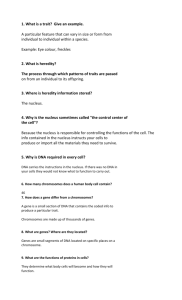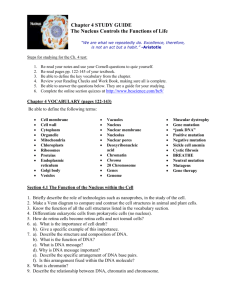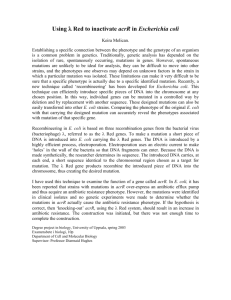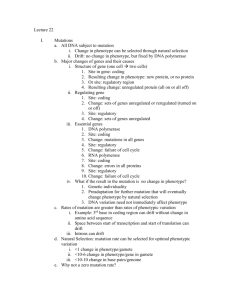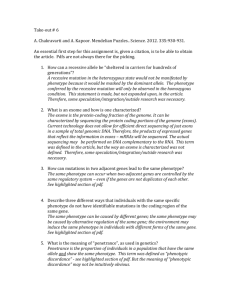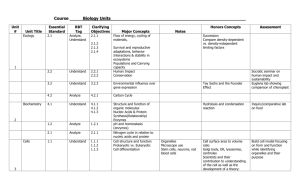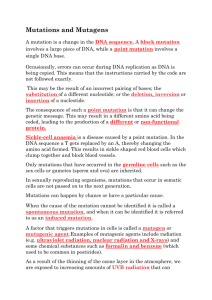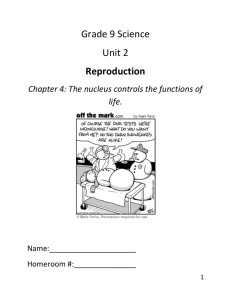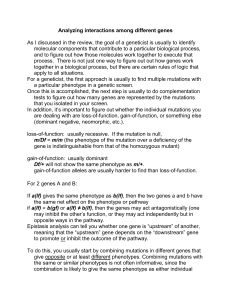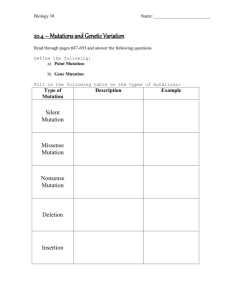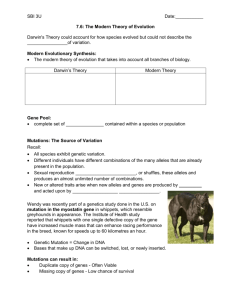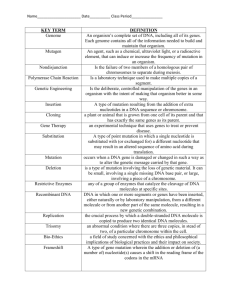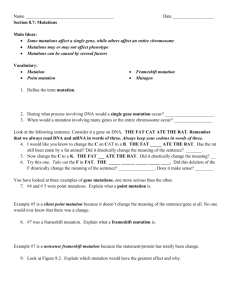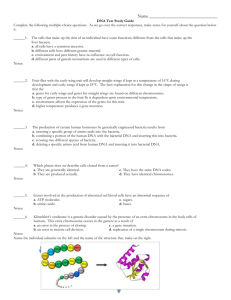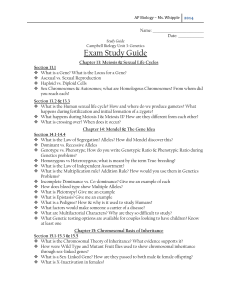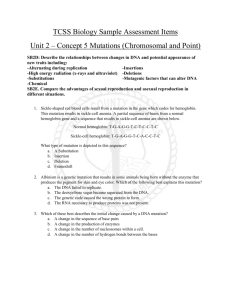Microbial Overview: Physiology and Evolution
advertisement
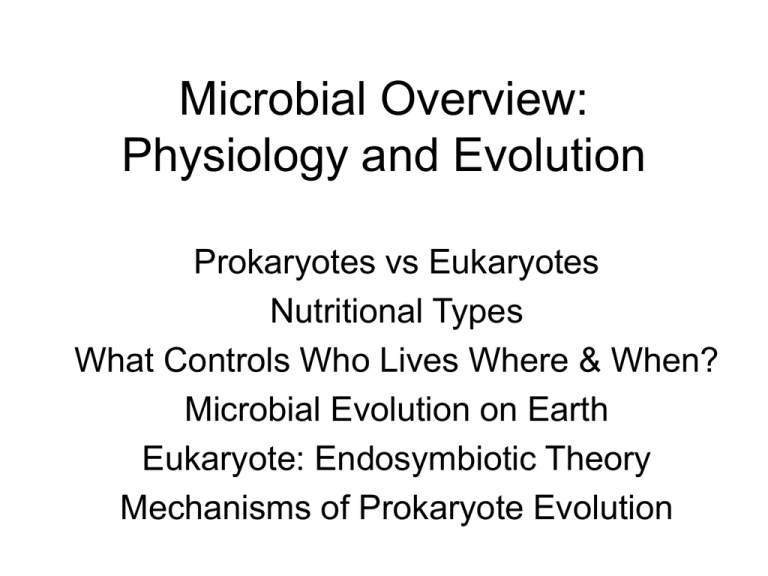
Microbial Overview: Physiology and Evolution Prokaryotes vs Eukaryotes Nutritional Types What Controls Who Lives Where & When? Microbial Evolution on Earth Eukaryote: Endosymbiotic Theory Mechanisms of Prokaryote Evolution Phylogenetic Tree of Life (3 Domains) Prokaryote “Anatomy” Overview Cell envelope: Collectively all the structures outside from the plasma membrane. Eukaryote Cell “Anatomy” Peroxisome: Oxidizes amino acids, fatty acids and alcohol; self replicating. Vacuole: membrane bound; liquid filled; storage of reserves and/or wastes. Cell Wall: cellulose and lignin in plants; chitin in fungi; no peptidoglycan Nutritional Types What Lives Where and Why? “Everything is everywhere, the environment selects” Martinus Beijerinck (ca. 1890) • Tolerance to All Environmental Factors (Shelford’s Law of Tolerance) • Growth Limiting Resource (Liebig’s Law of the Minimum) Environmental Factors • • • • • • • Nutrients (org/inorg; macro/micro/trace) Temperature Solute Concentration and Water Activity pH (acidity versus alkalinity) Oxygen Concentration Barometric Pressure Electromagnetic Radiation Oxygen Requirement Types 2 to 10% atm O2 “Microbial Lasagna” Microbial interactions control populations, too • Positive interactions: – Commensalism – Protocooperation – Mutualism • Negative Interactions: – Amensalism: – Competition: • Intraspecific • Interspecific – Predation (e.g. Bdellovibrio) – Parasitism Predation and Disease (Parasitism) Control Populations Too! • Protozoa and other “grazers” – May be selective. • Viral Lysis – Highly selective. Over 3.5 billion years of “microbes” Micro-fossils of “cyanobacteria” and contemporary stromatolites. * Early Earth Conditions? * Theories of the origin of life? Biogenisis (“Primordial Soup”) – not enough time! Panspermia? Hydrothermal Vent (no UV, reduced inorganics, reactive surfaces) * Evolution of Life Mutation Natural Selection * Photosynthesis, Poisonous O2, and Aerobic Respiration * Endosymbiotic Hypothesis for Eukaryotes Acquisition of aerobic respiration from alphaproteobacterium. Acquisition of photosynthesis and Calvin Cycle from cyanobacterium. Happened more than once? Major challenges for endosymbiotic theory 1. Most extant prokaryotes have rigid cell walls and don’t do phagocytosis. 2. Hard to explain the nucleus (!) and flagella. (Eukaryotic flagella have a 9+2 arrangement of protein strands, vs. single strand for prokaryotic flagella.) Phylogenetic Tree of Life: Rooted Tree based on 16SrRNA and 18SrRNA sequence data. All extant life has evolved; evidence lost by extinction. How does evolution work? We need to consider the molecule processes! Genotype Phenotype Bacterial Genomes • Chromosomal Map – Only structural genes versus splash map – Mostly single chromosome – Size: 1-5 Mbp – Many complete sequences (TIGR)! • Plasmids: – – – – Size: 2-200 bp Conjugative or not Copy number varies Gene functions vary Scope of Mutation: • A mutation is any change in the proper nucleic acid sequence of a specific gene in a cell’s genome. It may result from a single base pair mismatch during DNA replication. • Mutation can create genetic diversity within a population; either beneficial, neutral, bad, or lethal. • Mutation could result in a new phenotype that is advantageous to successful reproduction of the mutated individual; this depends on particular environmental conditions, called selective pressures. • Such beneficial mutations stay within a population from generation to generation, and drive the evolution of that species. • Bad or lethal mutations are often lost from a population over subsequent generations. Mutation types: – Macrolesions (large sequence sections) • • • • Deleted Inserted Inverted Duplicated a-b-c-d-e-f-g-h a-b-c-d-e-f-g-h a-b-c-d-e-f-g-h a-b-c-d-e-f-g-h → a-b-c-g-h → a-b-c-d-x-y-z-e-f-g-h → a-b-c-f-e-d-g-h → a-b-c-d-e-f-d-e-f-g-h – Microlesions (1 or 2 bp alteration) • Point Mutations (Base Substitutions) ACTG → ATTG • Frameshifts (Insertions or Deletions) see the cat eat the rat → see thc ate att her at – Mechanisms of microlesion mutation types • Spontaneous (1 per million; most corrected; 1 per billion remain) • Chemical mutagens • Radiation as mutagens Genetic Recombination: • Two DNA molecules may recombine segments of their molecule in a process called crossing over. • This is a relatively common event between chromosome copies in eukaryotes during meiosis. (Note the example here.) • Prokaryote chromosomes, viral DNA, and smaller fragments of “foreign” DNA may recombine, adding new genes (or different alleles) to an individual cell. • Bacteria can receive a foreign source of DNA for recombination through one of three different mechanisms of Genetic Exchange. Transposable Elements: “Jumping Genes” • Transposable elements (insertion sequences and transposons) can tranfer copies of themselves to other DNA molecules (chromosome, plasmid, or viral DNA). • Antibiotic resistance genes rapidly spread within and between bacterial populations by transposons carried on F factors called R plasmids. Horizontal Gene Transfer (= lateral gene exchange) • Conjugation • Tranformation • Transduction Where in Nature? Summary of Prokaryote Evolution Mechanisms • Mutation (micro or macro) changes genotype and possibly phenotype. • Mobile genetic elements (insertions sequences and transposons) may rearrange genes between and within DNA molecules and this may cause mutations. • Horizontal gene transfer (conjugation, transformation, transduction) may result in recombination of completely new genes. • Selective pressures in the environment determine if a new phenotype becomes dominant in a population. • Many changes in genotype are neutral or benign to phenotype and survival; these “cryptic” changes over time may result in genetic drift, i.e. a harmless variation of a gene randomly becomes dominant.

